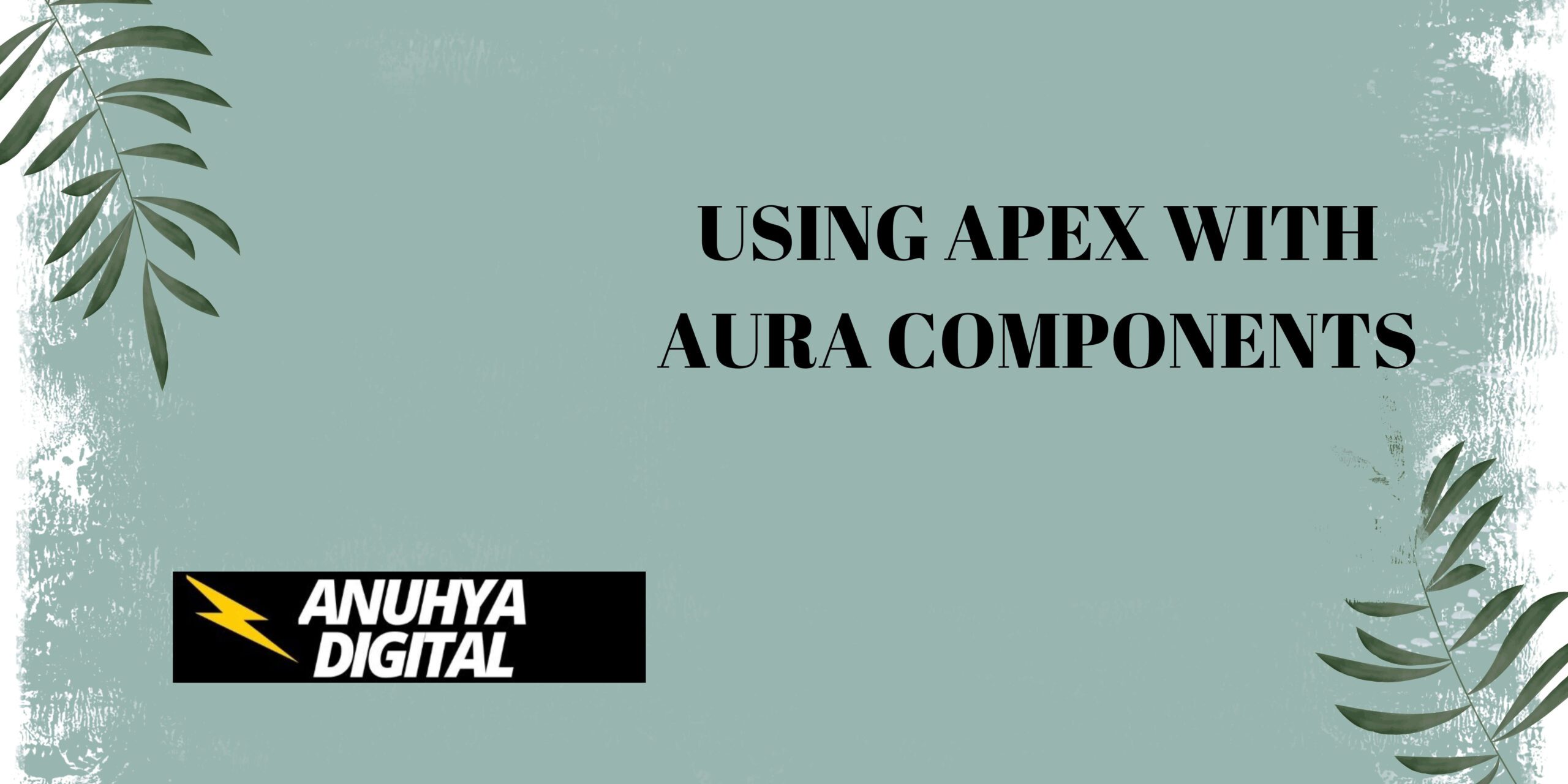In our previous blog post we had discussed about Aura Component Performance in Salesforce. In these blog post we discuss about Using Apex with Aura Components
Contents
- 1 Using Apex with Aura Components
- 1.1 Introduction to Using Apex with Aura Components
- 1.2 Benefits of Using Apex with Aura Components
- 1.3 Setting Up Apex for Aura Components
- 1.4 Creating Aura Components
- 1.5 Connecting Apex with Aura Components
- 1.6 Advanced Use Cases of Apex with Aura
- 1.7 Debugging and Testing Apex with Aura Components
- 1.8 Best Practices for Apex and Aura Integration
- 1.9 Conclusion
- 2 FAQs
Using Apex with Aura Components
Introduction to Using Apex with Aura Components
Salesforce development often revolves around creating dynamic and interactive user experiences. Aura Components offer a powerful framework to design such interfaces, and Apex brings server-side capabilities to handle business logic. Together, they create a seamless blend of front-end and back-end functionalities.
Benefits of Using Apex with Aura Components
Seamless Integration
Apex methods can be directly called from Aura components, allowing for real-time data manipulation and display.
Handling Complex Business Logic
Apex provides the computational power needed to process intricate workflows and validations, making it ideal for advanced Salesforce applications.
Performance Optimization
By offloading heavy processing to the server using Apex, you ensure smoother and faster client-side interactions.
Setting Up Apex for Aura Components
Writing an Apex Class
Start by creating an Apex class tailored to your use case. For example:
Best Practices for Apex Class Development
- Follow Salesforce governor limits.
- Keep methods modular and reusable.
Exposing Apex Methods to Aura Components
Apex methods must be annotated with @AuraEnabled to make them accessible to Aura components.
Creating Aura Components
Understanding Component Structure
Aura components consist of bundles, which include multiple files such as .cmp, .js, .css, and .xml.
Building a Basic Aura Component
Here’s an example of a simple Aura component:
Connecting Apex with Aura Components
Lightning Data Service vs. Apex Calls
While Lightning Data Service offers declarative data access, Apex provides flexibility for complex logic.
Making Server-Side Calls from Aura Components
Use the action.setCallback method to handle server responses:
Advanced Use Cases of Apex with Aura
Dynamic Data Retrieval
Leverage SOQL queries in Apex to fetch data dynamically.
Processing Bulk Data
Apex batch processing is a game-changer for handling large datasets.
Performing Asynchronous Operations
Use @future methods or queueable Apex to perform time-intensive tasks.
Debugging and Testing Apex with Aura Components
Debugging Techniques for Apex
Use debug logs and the Developer Console to trace issues.
Testing Apex Classes for Aura Integration
Ensure thorough unit testing:
Best Practices for Apex and Aura Integration
- Optimize Queries: Use selective queries to avoid SOQL limits.
- Ensure Reusability: Create modular components and methods.
- Prioritize Security: Avoid SOQL injection and ensure proper field-level security.
Conclusion
Apex and Aura components are a dynamic duo in Salesforce development. Their integration enables complex business logic to be efficiently handled while delivering a responsive user experience. Embrace this powerful combination to create impactful applications.
We want to more about Using Apex with Aura Components Click Here
FAQs
What is the purpose of using Apex with Aura components?
To integrate server-side logic with client-side UI for robust application functionality.
How do you expose an Apex method to Aura components?
Use the @AuraEnabled annotation on the method.
What are some best practices for integrating Apex with Aura?
Focus on performance, reusability, and security in your implementations.
Can Aura components work without Apex?
Yes, but Apex is essential for complex logic and data manipulation.
How does Lightning Web Components (LWC) differ from Aura?
LWC is a modern, standards-based framework, while Aura is older and less efficient.
In our next blog post we will discuss about Debugging Aura Components
